Aachen Cathedral
By Jenny
What is Aachen Cathedral?
Aachen Cathedral (or Aachener Dom) is one of the oldest cathedrals in Europe. It dominates nearly every picture of Aachen with its imposing lines and high tower. Charlemagne began construction of the cathedral in 796 AD. The cathedral got some add-ons during the Middle Ages and has been extensively restored.
Disclosure: This article contains affiliate links. Making a purchase through an affiliate link will mean a small commission for this website. This will not affect your price.
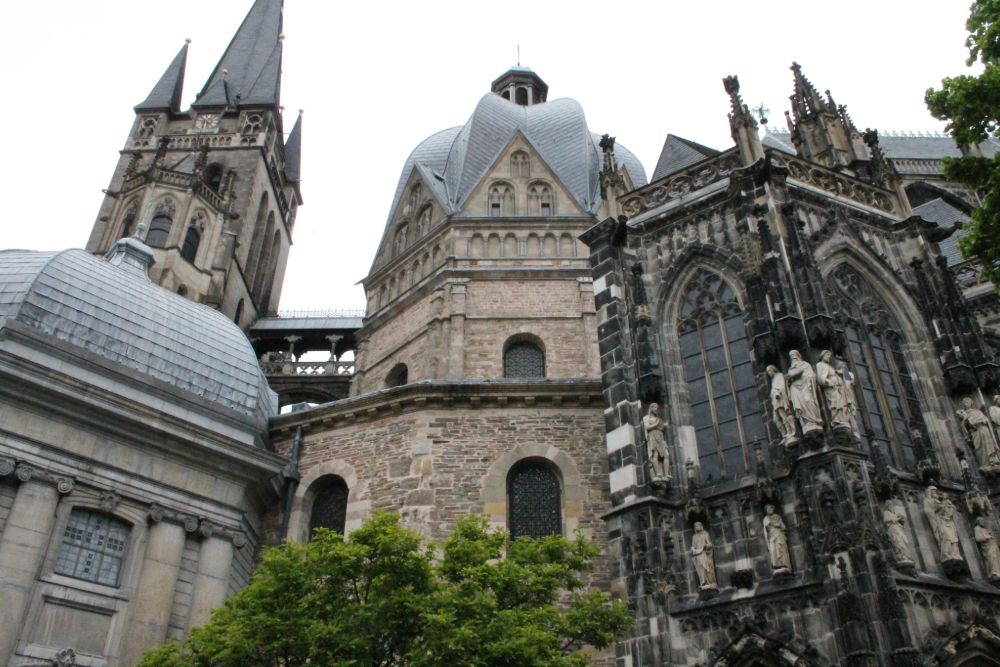
One important question to understanding the history and significance of the cathedral is: who was Charlemagne? Charlemagne, or Charles the Great, was the king of the Franks, the first emperor in Europe three centuries after the fall of the Roman Empire, and the founder of the Carolingian Empire. He was a very influential man who united large parts of western Europe during his lifetime. Aachen, a spa town, was his imperial city.
An emperor needed a cathedral that befit his status, and you will find that the Aachen Cathedral fulfills that picture in every way. It’s in the heart of old town, ringed by beautiful old buildings, so you don’t see it from far away. But once you get closer, you will be able to admire its full beauty. Take your time to wander around the outside. The architecture is very intricate and there are lots of details to explore.
If you thought the outside was stunning, you’ll be in for an even nicer surprise on the inside. Walk through the impressive bronze doors of the main entrance, admire the antique columns, the Carolingian bronze grills, the restored mosaic on the dome which depicts the enthroned Christ surrounded by twenty-four elders, and much more.
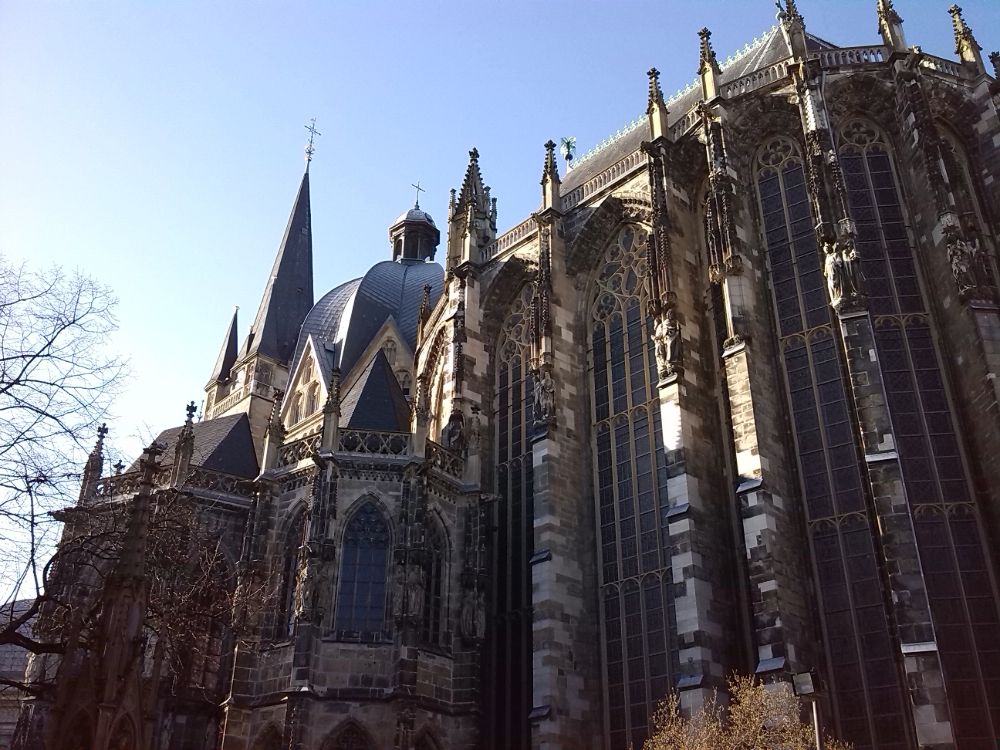
Why is Aachen Cathedral a UNESCO World Heritage site?
The cathedral was added to the list of UNESCO World Heritage sites in 1978, the first monument in Germany to receive that honor. It is one of the best preserved and most significant architectural monuments from the Carolingian period, with great artistic value due to the bronze doors and marble columns. With both Classic and Byzantine elements, it became “one of the prototypes of religious architecture which inspired copies or imitations,” according to UNESCO: “the first vaulted structure north of the Alps since Antiquity.”
As a building, the cathedral “symbolised the unification of the West and its spiritual and political revival under the aegis of Charlemagne.” He was buried there in 814, and the cathedral served as the venue for coronations for German emperors until 1531.
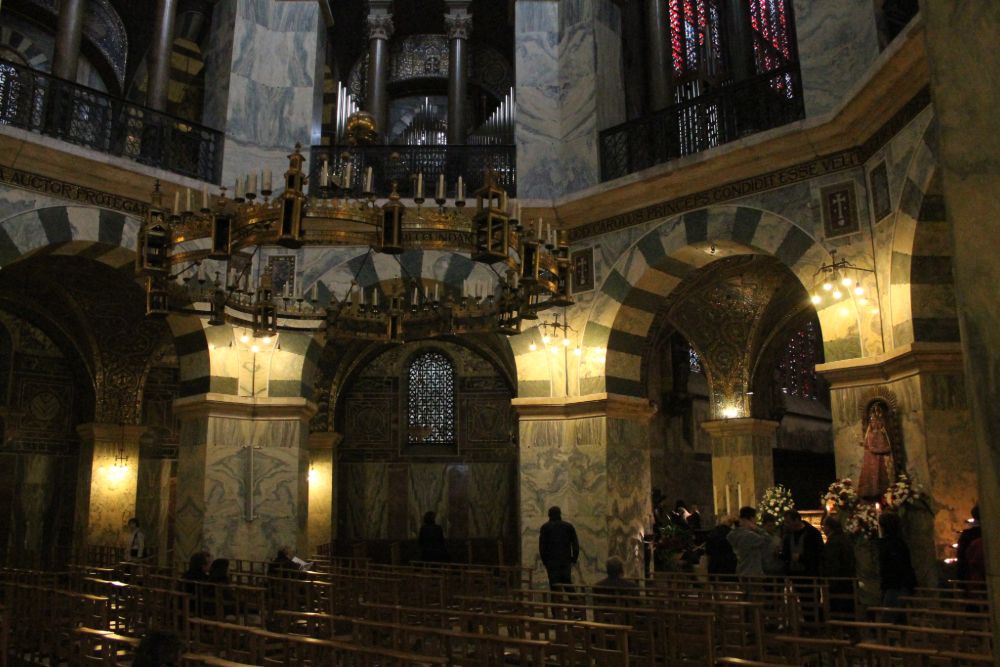
What can you expect on a visit to the cathedral?
The cathedral is open every day, so no matter when you visit, you’ll be able to have a look. These are the specific hours, but check this website before you go to ensure the cathedral isn’t closed to visitors for a church or special service:
- Monday – Saturday 11 am – 7 pm
- Sunday 1 pm to 5.45 pm
Entrance is free, but there’s a small donation box at the entrance. All proceeds are used for renovations and restorations, and I always add at least a couple of euros for the cause. For as long as I can remember there’s been restoration work in progress, and as an Aachen native I appreciate how well this most important landmark is being taken care of.
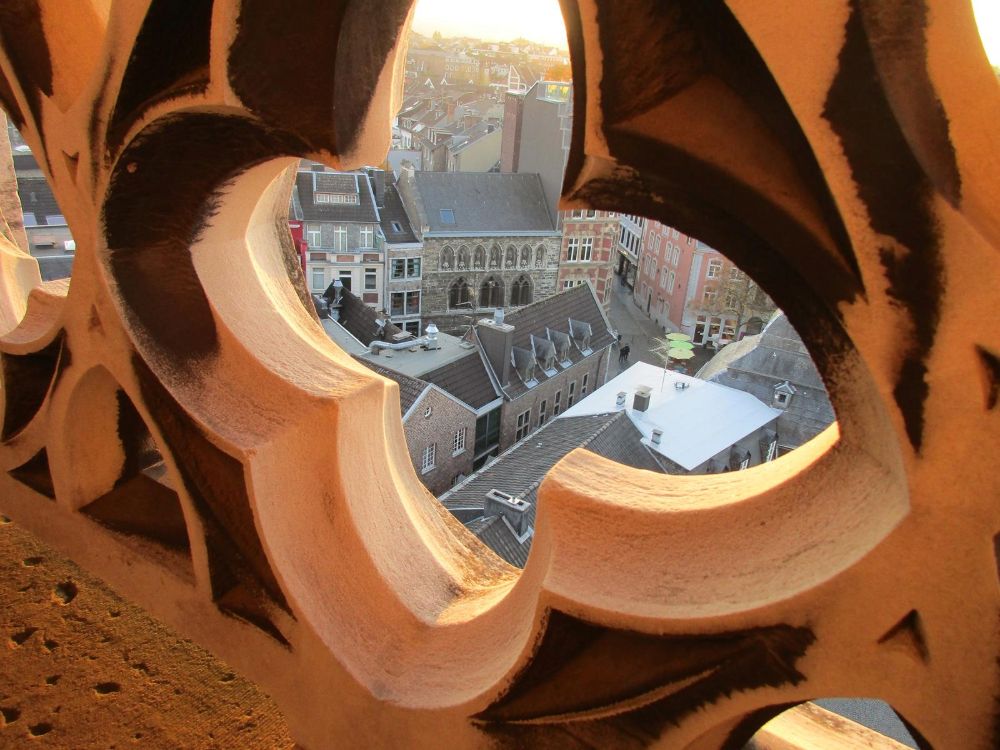
After your visit to the cathedral, move on to the Cathedral Treasury. The Treasury is part of the UNESCO site, considered one of the most important treasuries north of the Alps, and it’s a must-see. I still remember going the first time when I was just a little girl in elementary school. It was all I could talk about for days. The splendor of the treasures, the gold and the jewels left quite an impression. That effect is no less when you visit as an adult. It contains the remains of Charlemagne, along with many important artifacts and relics which tell the story of kingships and liturgical practice through history.
Get your tickets at the visitor center. The hours are daily from 10 am – 5 pm. Audio guides are available and help a lot with understanding individual pieces and artifacts.
Is Aachen Cathedral worth visiting?
I grew up in Aachen, but moved away in 2017. Yet every time I visit my hometown I make it a point to visit the cathedral. It’s simply a magnificent structure that is worth seeing time and again. The cathedral, along with the treasury, paints a comprehensive picture of a long-ago time that is interesting to learn about.
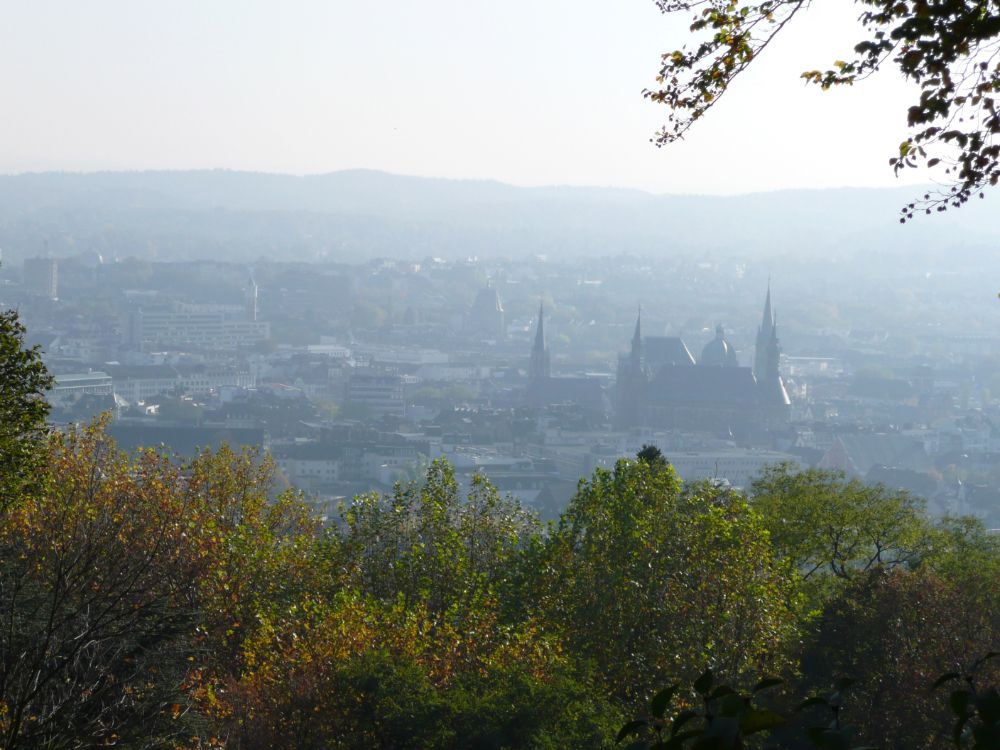
What sort of visitors would like the cathedral?
Anyone who is interested in history! So often we only learn about major wars, or our own country’s history in school, but later on in life we have the chance to explore other parts of history that interest us. Visitors to Germany often go to the big cities: they spend 2 days in Berlin, a week in Munich, or a weekend in Cologne. But treasures can be found off the beaten path, and they are often more interesting than the big tourist attractions.
Anyone who is interested in art would also enjoy visiting this UNESCO site. From the mosaics in the octagonal chapel – the oldest part – to the stained glass windows, to the beauty of the artifacts found inside the cathedral, as well as in the treasury, there’s no shortage of art to marvel at.
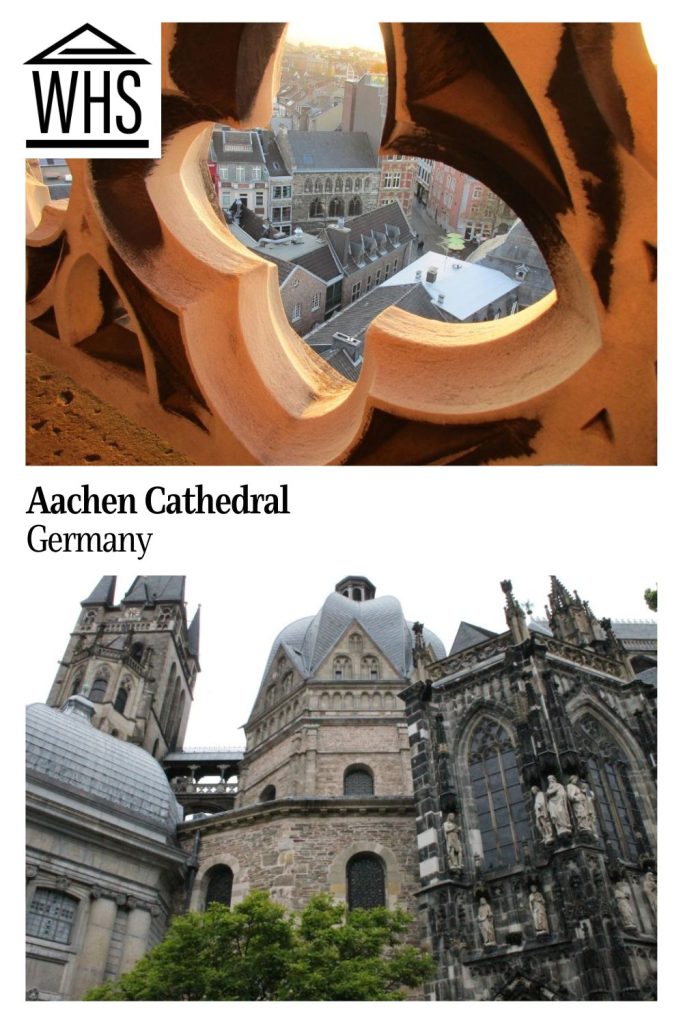
Tips for visiting Aachen Cathedral
I highly recommend attending a mass at the cathedral. No matter if you are Catholic or not, it’s beautiful to see the traditions being performed in this splendor. The Eucharistic celebrations are held every weekday at 7 am and 10 am, and on Sundays at 8 am, 10 am, and 11.45 am.
While it is awe-inspiring just to walk around and explore everything by yourself, you should consider taking a guided tour to fully understand this UNESCO World Heritage site’s full history. Tickets are available only on the same day at the Dominformation, the cathedral’s visitor center, which opens at 10 am. Here you can also buy postcards and other souvenirs. Tours are available on the hour from Monday through Friday from 11 am until 5 pm, Saturdays from 1 pm until 5 pm, and Sundays from 1 pm until 4 pm. Note: English-speaking tours are available every day at 2 pm only!
Occasionally they do offer tours of the tower. It’s rare, but it’s worth it! Contact the visitor center to find out if that is an option during your visit.
Aachen has more to offer than just the cathedral. It’s a city full of myths and legends, which are really fun to hear about. I would recommend doing a tour of the old town to explore those. The old town is a beautiful area: classic European, with cobblestones, many cafes and restaurants, as well as shops.
While you’re in the area, make sure to visit Cologne as well to see the UNESCO-listed Cologne Cathedral. And the Upper Middle Rhine Valley, with its storybook castles perched above the Rhine River, is also not far away.
Where is the cathedral?
You will find Aachen Cathedral at Domhof 1, 52062 Aachen, Germany. Public transportation is excellent, so you don’t necessarily need to come by car. If you’re staying in Cologne you can take a day tour to Aachen by train.
If you do decide to drive, you will find a couple of parking garages in the vicinity:
- Parkhaus am Dom, Jesuitenstrasse 12
- APAG Parkhaus Rathaus, Mostardstrasse 5
On the other hand, if you are staying anywhere near Aachen city center, it’s easy to walk. Use the map below to find accommodations near the center of the old city:
For more information about Aachen Cathedral, visit their official website.
Have you been to Aachen Cathedral? If so, do you have any additional information or advice about this UNESCO World Heritage site? Please add your comments below!
